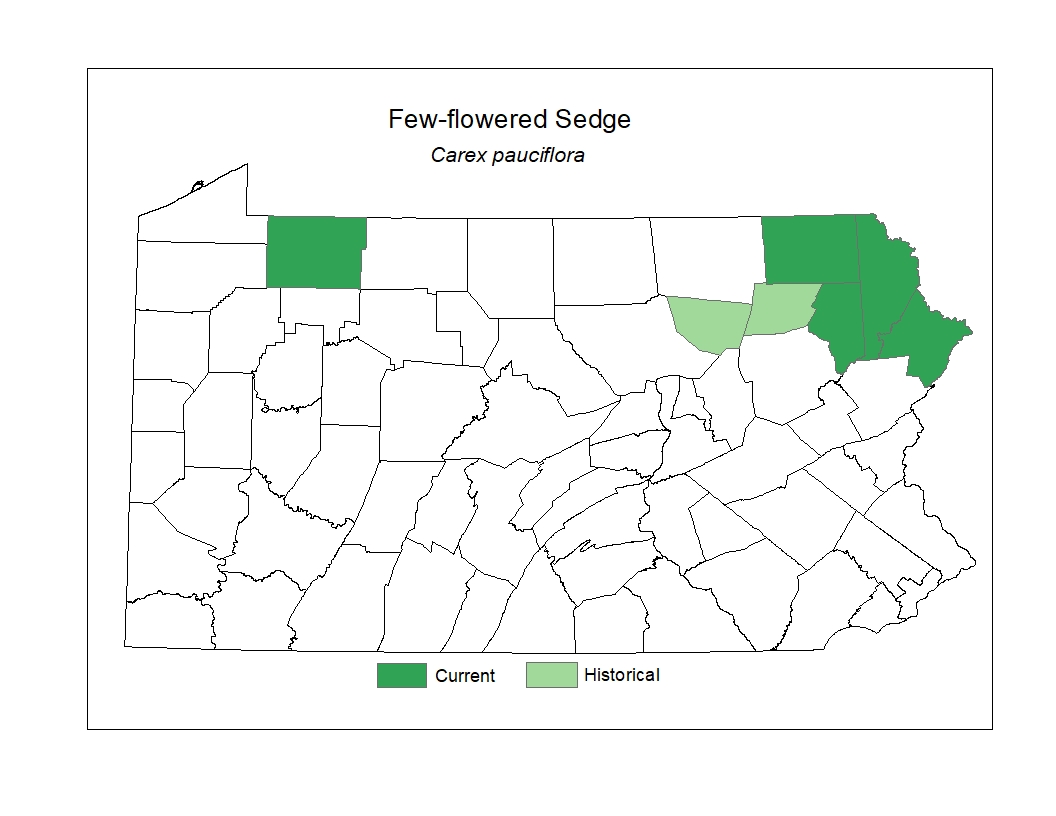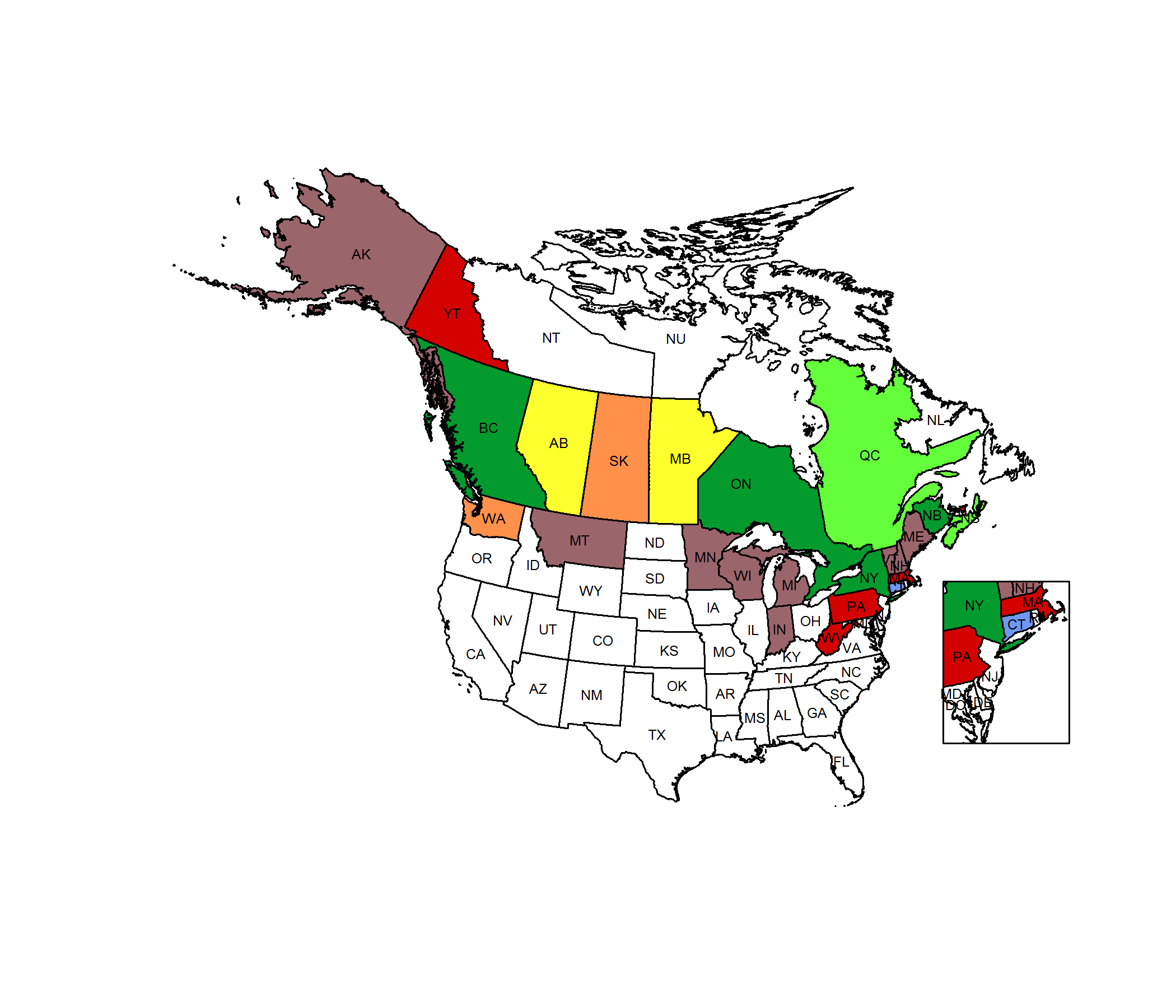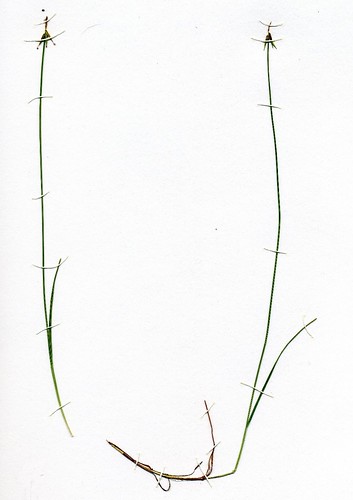 Species Factsheets
Species Factsheets
Carex pauciflora
Few-flowered Sedge
State Status: Pennsylvania Endangered (PE)
PBS Status: Pennsylvania Endangered (PE)
Federal Status:
Global Rank: G5
![]() rank interpretation
rank interpretation
State Rank: S1
Description
Few-flowered Sedge is a perennial, relatively delicate grass-like plant that produces wide-spreading underground stems, or rhizomes. The three-sided aerial stems may grow to 0.5 m in height, but are often much shorter. The leaves include a sheathing basal portion and an elongate and narrow blade that is alternately arranged and only about 1-2 mm in width. The minute flowers, which appear in spring, are clustered at the tip of the stem, with the male flowers at the very top and several (usually 1-6) female flowers directly below. The plant is most recognizable when fruiting in late spring and early summer, with the fruits being enclosed in sac-like structures, or perigynia, which in this species are particularly elongate and slender, being about 7 mm in length and 0.8-1.2 mm in width, tapered to a pointed tip, and conspicuously point downward.
Rank Justification
Critically imperiled in the nation or state because of extreme rarity (often 5 or fewer occurrences) or because of some factor(s) such as very steep declines making it especially vulnerable to extirpation from the state.
Habitat
The species grows in bogs and peaty wetlands, especially on floating sphagnum moss mats around bog pools.
Survey Dates
Fruits late May - early September
Distribution
Few-flowered Sedge has a transcontinental range across the cooler regions of North America. In Pennsylvania, it is considered a northern species, and has been documented historically in the glaciated northeastern and northwestern counties.

Management
The viability of populations of Few-flowered Sedge and its habitat may be enhanced by creating buffers and protecting the natural hydrology around bogs and controlling invasive species. Few-flowered Sedge is an indicator species for bog habitats that feature various orchids, insectivorous plants such as sundew, bladderwort, and pitcher plant, and other interesting species.
Conservation Status Map


NatureServe. 2017. NatureServe Explorer: An online encyclopedia of life [web application]. Version 7.1. NatureServe, Arlington, Virginia. Available https://explorer.natureserve.org.
- NatureServe. 2018. NatureServe Explorer: An online encyclopedia of life [web application]. Version 7.1. NatureServe, Arlington, Virginia. Available at https://www.natureserve.org/explorer
- Pennsylvania Natural Heritage Program. 2018.
- Rhoads, A.F. and W.M. Klein, Jr. 1993. The Vascular Flora of Pennsylvania. American Philosophical Society, Philadelphia, Pennsylvania. Rhoads, A.F. and T.A. Block.
- 2007. The Plants of Pennsylvania: An Illustrated Manual. 2nd edition. University of Pennsylvania Press, Philadelphia, Pennsylvania.







